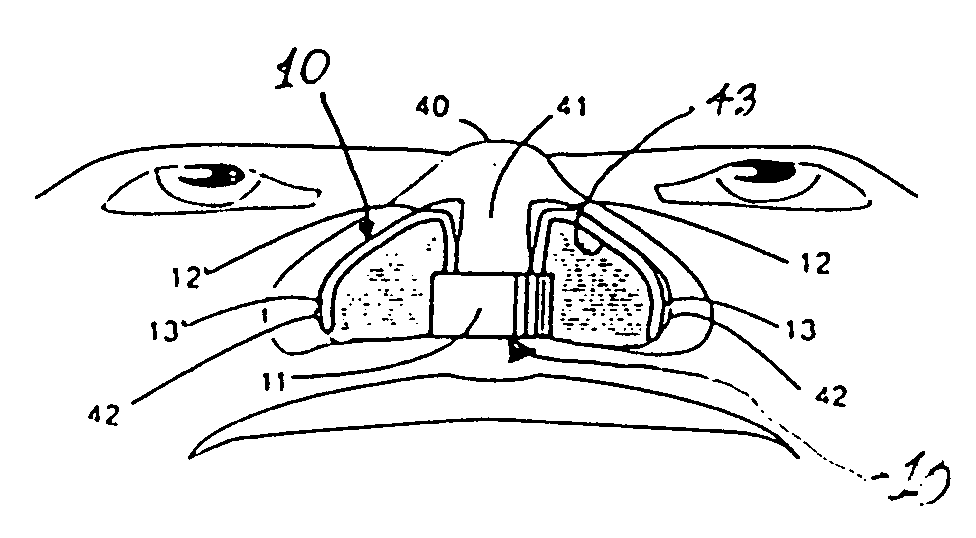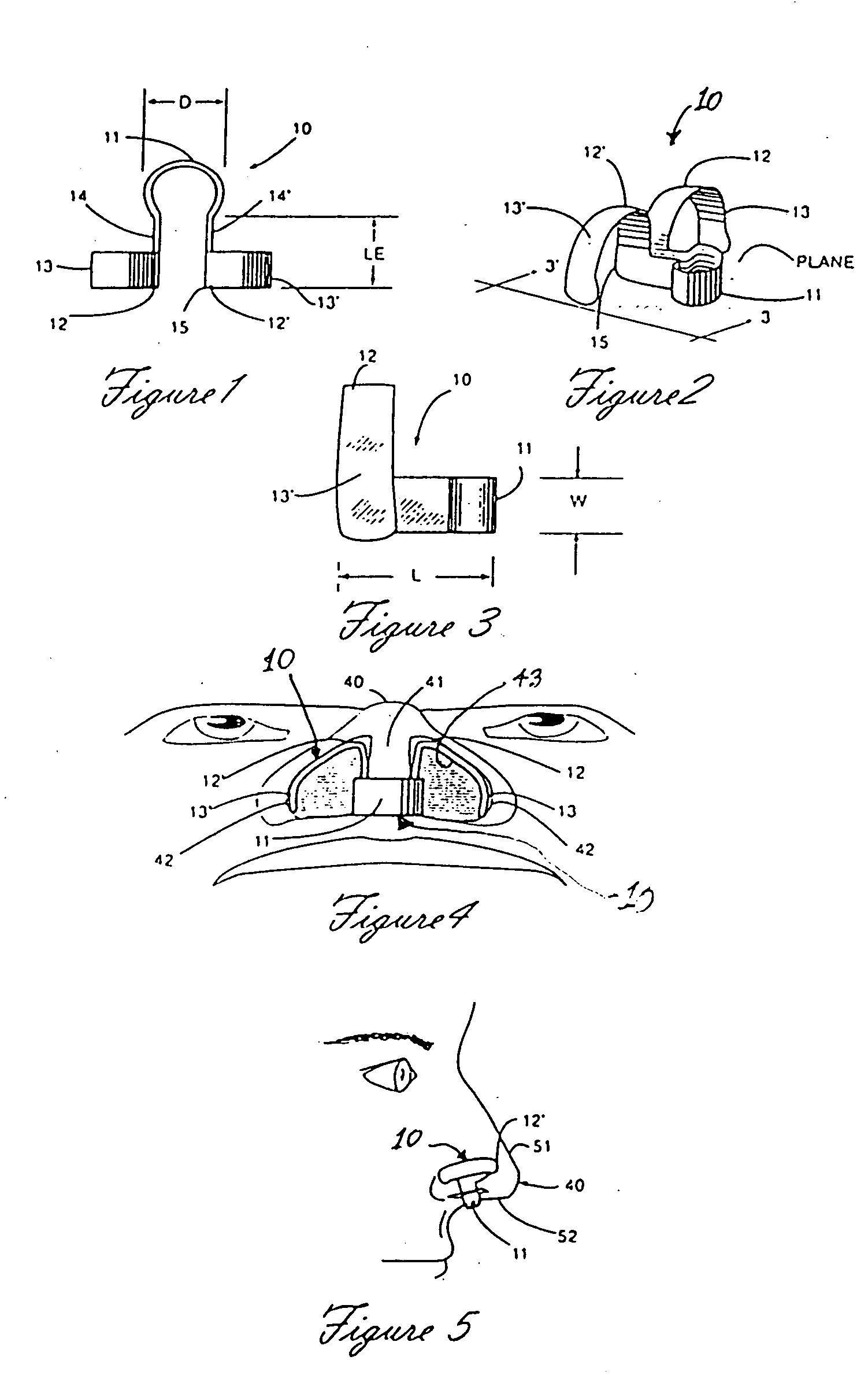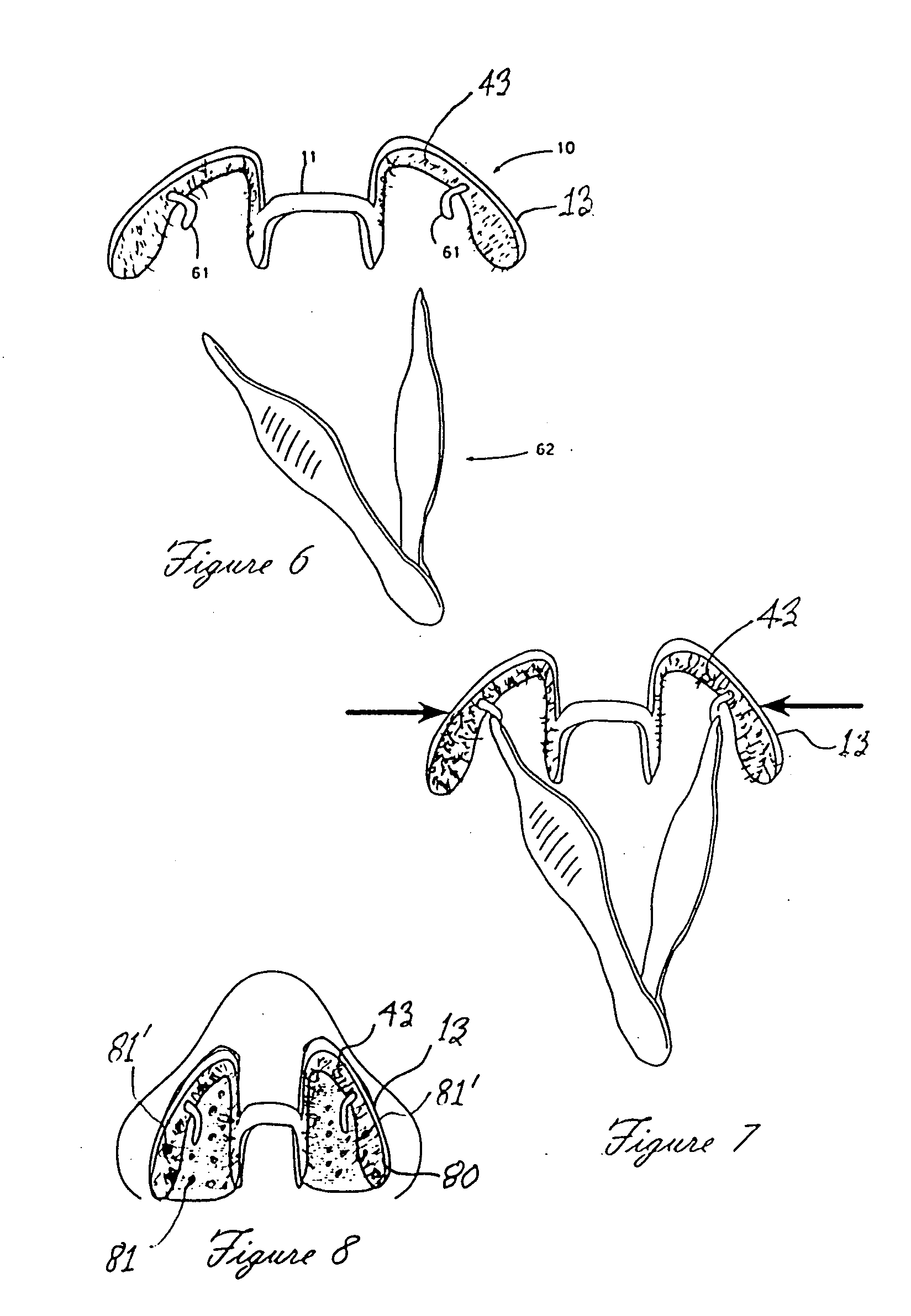Nose airway for aromatherapy and detecting airborne pathogens
a nose airway and aromatherapy technology, applied in respiratory apparatuses, inhalators, chemical indicators, etc., can solve the problems of less than optimum air flow or discomfort, device disintegration, device use, etc., to control and/or limit the projection of the device into the nostrils, easy and inexpensive manufacturing
- Summary
- Abstract
- Description
- Claims
- Application Information
AI Technical Summary
Benefits of technology
Problems solved by technology
Method used
Image
Examples
Embodiment Construction
[0025] The airborne pathogen indicating device 10, shown in front (anterior) elevational view in FIG. 1, is a unitary strip of elastically deformable material, preferably hypoallergenic, elastomer shaped to form a symmetrical 3-dimensional structure as generally shown in FIG. 2. The airborne pathogen indicating device 10 is bifurcated and symmetrically disposed in structure with respect to the medial septum attachment portion 11. The septum attachment portion 11 is a semi-cylindrical arcuate distal coterminous for the inferior or distal end of the extension portion 14 and 14′ of the device 10, connecting the tines 14 and 14′ of the extension portion to one another and having an inner diameter D. The extension portion consists of tines 14 and 14′ and extends proximally, away from the septum attachment portion a distance L, the proximal terminus of the extension portions 14, 14′ being shown at 15. The dilating portion consists of two “U” shaped projections projecting anteriorly on a p...
PUM
 Login to View More
Login to View More Abstract
Description
Claims
Application Information
 Login to View More
Login to View More - R&D
- Intellectual Property
- Life Sciences
- Materials
- Tech Scout
- Unparalleled Data Quality
- Higher Quality Content
- 60% Fewer Hallucinations
Browse by: Latest US Patents, China's latest patents, Technical Efficacy Thesaurus, Application Domain, Technology Topic, Popular Technical Reports.
© 2025 PatSnap. All rights reserved.Legal|Privacy policy|Modern Slavery Act Transparency Statement|Sitemap|About US| Contact US: help@patsnap.com



